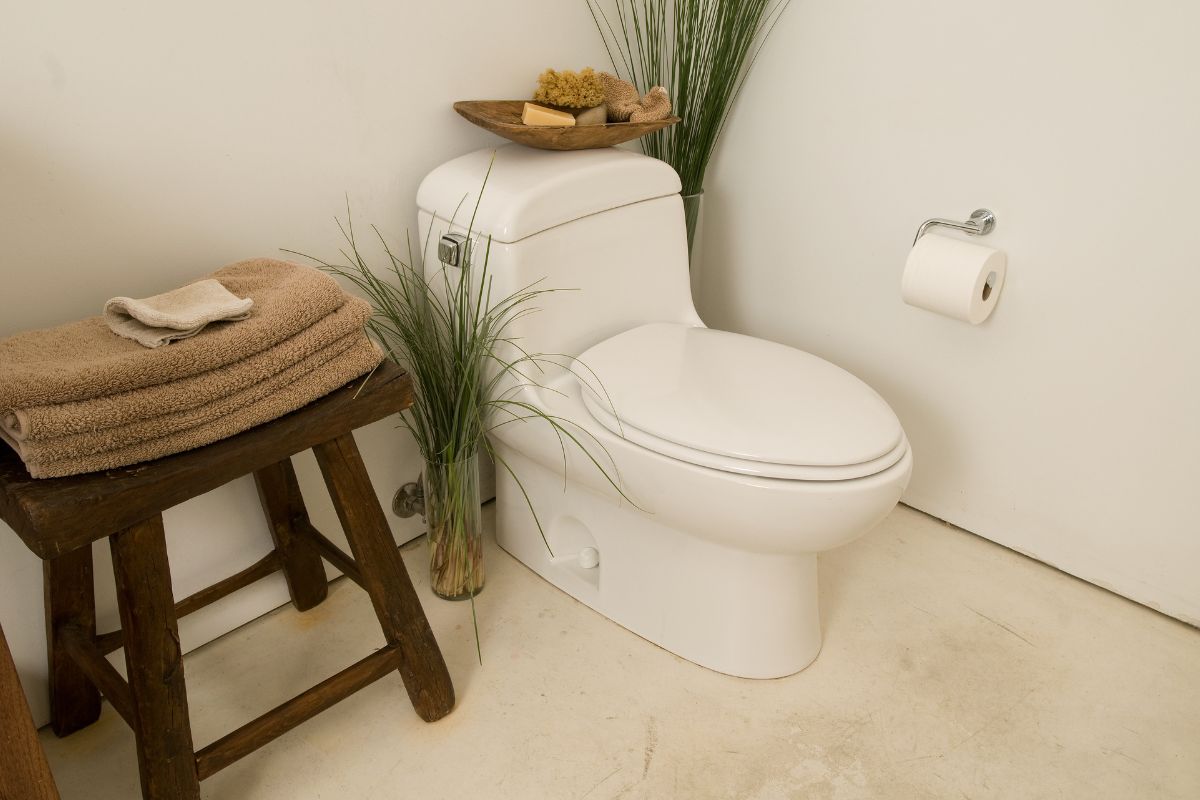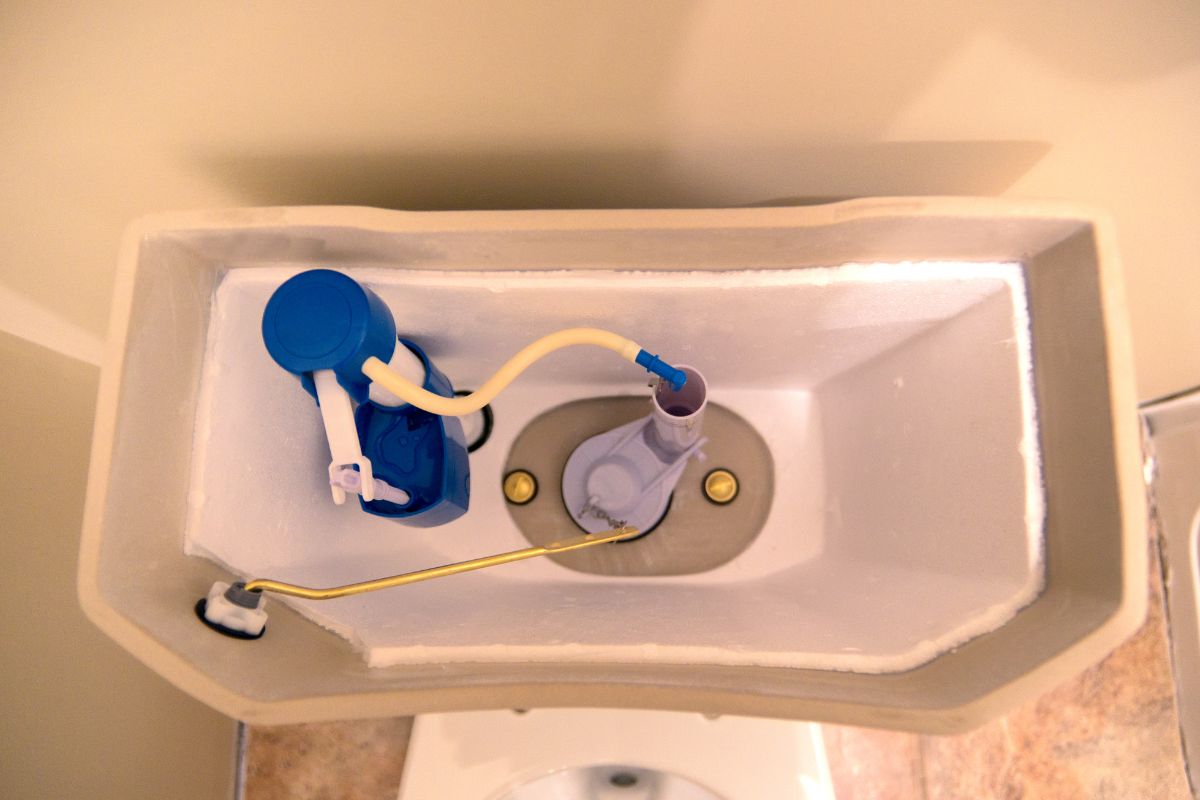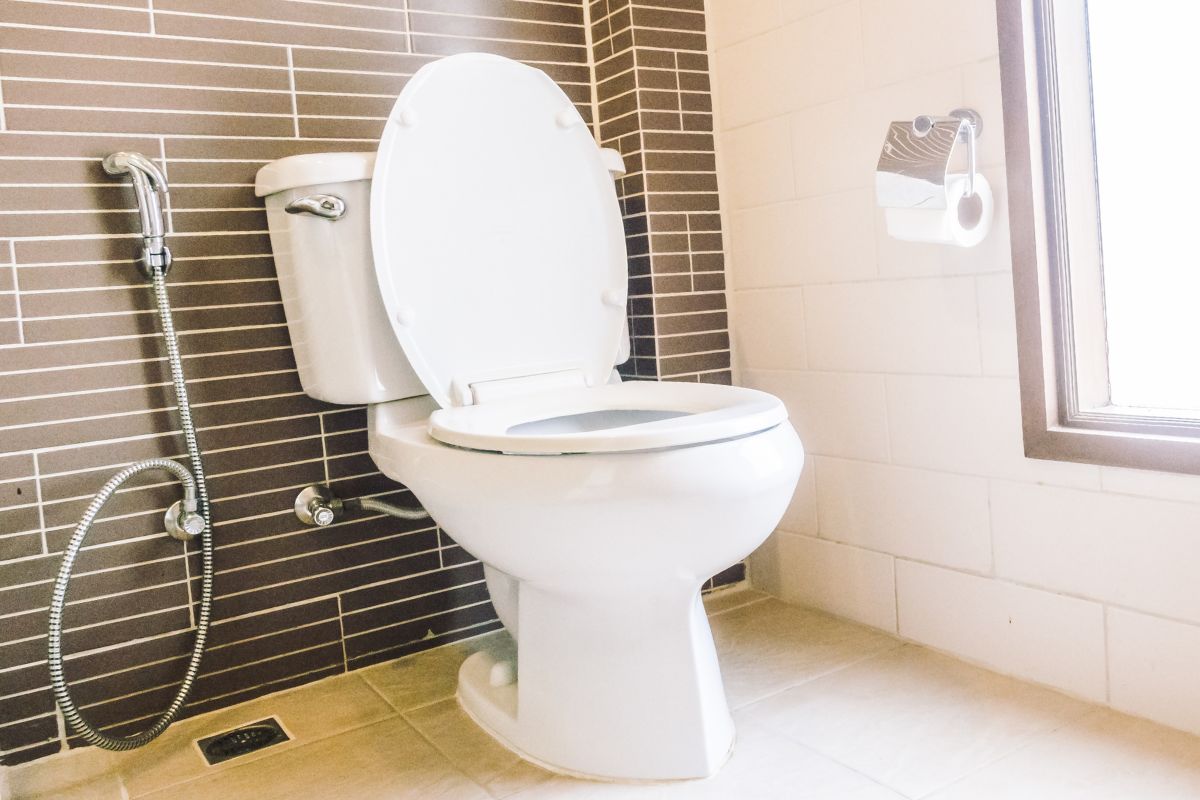I don’t think that anybody would argue with me if I said that the toilet is the most important thing in any household.

Let’s face it, you could sleep on the floor – but nobody wants to… do their business on the floor.
But the thing with toilets is that despite their importance, there are very few people who know the parts of a toilet and exactly how they work.
It’s crazy really, because while toilets are intricate, mechanical and hydraulic facilities – one problem with them can mean they’re out of action.
Of course, this means that if you’re faced with a problem with one of your toilet parts, you could find that your most crucial part of the home is unusable – and this is definitely something you want to avoid.
So what exactly can you do about it?
Well, I found that the best thing to do is have a clear understanding of how your toilet works, including how every part fits in, plays a role and operates.
Luckily, I’ve got that covered for you. I’ve written this ultimate guide which shows you all the parts of your toilet and how they work.
Now, if you’re ready to dive in and learn a lot more – then read on for all the answers!
Understanding Your Toilet: What’s The Point?
I’ve briefly given you some reasons why you should learn how your toilet works, but it’s really important that you know why it’s a good idea to even bother.
The fact is that 20% of all toilets in America can leak at some stage in their life.
If and when you’re faced with this problem, you’ll normally need to call out a plumber to inspect and repair the situation.
However, if you have some areas of plumbing knowledge, you might be able to help out the professional when you call for assistance.
I don’t recommend trying to fix a toilet problem unless you have a lot of experience or plumbing knowledge, because while toilets aren’t exactly brain surgery to understand, getting them wrong can be very costly… not to mention messy!
Water damage can create a much more costly problem to your home rather than just being without a toilet for a bit, so I absolutely recommend calling a professional.
However, if you can say to a professional on the phone that you suspect the problem is X because you’ve noticed Y, then they may be able to quickly diagnose the problem and get your toilet working much more quickly.
Not only this, but it helps you out if you come across a plumber who might be trying to coax a lot more money from you for a basic fix.
In other words – having some knowledge of how your toilet works and how to fix it can save you money and time!
Parts of a Toilet
The toilet’s mechanism looks and feels pretty simple doesn’t it? If you’re used to just flushing the unit, you’d suspect that there’s not much more you need to know.
However, toilets are perfectly balanced inside and require the parts to work reliably.
There are three main sections of a toilet; the tank, the bowl and the exterior. I’m going to take you through each of these sections in more detail now.
Parts Of Your Toilet Tank

To really simplify it, the toilet tank is the “main” section of your toilet. Typically it is made of porcelain and it’s the area that your back is aligned with when you sit down.
This is the section with the most moving parts of the whole unit.
If your toilet starts leaking or begins to lose water pressure, then the chances are the problem stems from the toilet tank.
Let me go through the main parts of the tank.
Toilet Handle
I would hazard a guess that the toilet handle is probably the only part of the toilet’s mechanism that you have interacted with before – and of course it’s the only part of the system that appears externally.
Trip Lever
Within your toilet tank, there is a small plastic or metal bar, known as the trip lever.
This is usually just behind the toilet handle and it lifts every time the toilet handle is operated. On the other side, you will find the chain.
The Chain
The chain is the connection between the trip lever and the flapper valve.
This allows the tank to empty because when the handle is pulled, the trip level is pushed up and the chain fastens allowing the flapper valve to open.
The Flapper Valve
The flapper valve is a piece of rubber made water-tight which seals the tank – keeping water within the tank when the unit is not being used.
The flapper valve is connected specifically to the chain.
The flapper valve is certainly one of the least lasting parts of the toilet because they are prone to wear and tear over the years.
If this happens, the toilet tends to leak.
Flush Valve Gasket
This part of the toilet sits at the bottom of your tank, directly underneath the flapper valve.
To put it simply, it’s the counterpart to the flapper valve and it is meant to fit spotlessly to keep the water in.
Fill Valve
The fill valve is the component that ignites the mechanism, allowing water to fill the tank.
Normally, this part is connected to a hole in the tank, and then connects to a hose that leads to the supply of water.
The Float Ball And Rod
This is a very important part of your toilet. The float ball and rod prevents water from continuously filling the tank and then flooding your bathroom!
This rod is connected to the fill valve and it prevents the flow of water from getting too much.
Overflow Tube
Sadly, the float ball and rod is not everlasting.
In fact, pests can cause holes to appear in the float ball and when they fill with water, they get too heavy to float. The rod on the other hand can rust and fail to operate correctly.
If either of these situations happen, the toilet will simply continue to fill with water until you have a flooded bathroom.
Luckily, this is where the overflow tube comes into play. This small tube forces water to flow into the toilet bowl if the tank overfills.
This tube is a small pipe located at the back of your tank.
Main Parts Of Your Toilet (Bowl, Seat, Base And Plumbing)

It’s now time for me to move onto the “main” parts of your toilet. Each part has a lot to it, so I’ll break it down as simply as I can for you.
Toilet Bowl
When you first look at it, the toilet bowl appears pretty basic and nothing too complex. However, it’s the areas “behind the scenes” which make it quite intricate and detailed.
Flapper Valve Gasket
This is the area where the toilet tank and the bowl converge. When the flush is operated, the water being held flows in and pushes the dirty water out.
Rim Holes
What you might not know is that there are a series of holes located under the bowl, sometimes known as the lip.
These holes are important to allow water to circulate around this area, because after flushing, some dirty water can remain.
The Toilet Seat
Toilet seats are essential to prevent you from getting a cold and potentially dirty behind when using the toilet. There are many types of toilet seats and choosing the right one for you will help you a lot!
They’re normally made of wood or plastic and connected to the toilet via screws and hinges.
Toilet Seat Cover
The toilet seat cover is actually more important than some people realize.
While it is there primarily for comfort purposes, it also prevents dirty water from splashing out onto your bathroom floor or other units.
Toilet Base
The toilet base is the large bit that connects from the bowl to the floor. It hides several safeguarding measures which prevent water from flooding your bathroom.
Closet Flange
This component is the rubber ring, normally very thick, which allows the toilet to be mounted onto the floor.
It’s responsible for the connection between the pipes and allows for them to be insulated (which helps to prevent frozen pipes during the winter).
There is normally a type of sealant added after the component is screwed in, so everything sticks closely together.
Exterior Plumbing
It perhaps comes as little surprise that the exterior plumbing has all of the pipes and extra mechanisms that keep the clean water flowing in and the dirty water flowing out, known as inlet and outlet pipes respectively.
[Inlet] Flexible Hose
This hose takes the water from your main supply and connects to the fill valve. It’s normally a plastic hose which is then covered with a steel mesh.
[Inlet] Shut-Off Valve
This is a very important part of the system. It allows you to shut off the water supply, so if your toilet starts to leak or overfill, this valve can save you a lot of damage!
It’s also operated when there is some work required in your home now and then.
[Outlet] P-Trap Pipe
This pipe can be found under the toilet bowl and it’s a U-bend that stores a small amount of water inside of the bowl.
Its main purpose is to keep any unpleasant smells from entering the room when human waste is expelled.
[Outlet] Drain Pipe
The drain pipe is the pipe responsible for removing waste water and sewage from the bowl and into the sewage system.
How Exactly Does This All Work?
I understand that it might get a little confusing, but needless to say that every single area of the toilet works in conjunction with another.
As you have seen, if one part ceases to work, it’s possible for the toilet to be completely unusable.
Here’s a basic breakdown of what I have covered:
- Water flows from the water supply to the flexible hose (where the shut-off valve is)
- Water flows into the fill valve, going into the refill tube and overflow tube, allowing for the tank to fill. The float ball will alert the fill valve when the tank is full
- Once the toilet handle is operated, the trip lever kicks in which pulls the chain, also connected to the flapper valve allowing water to release from the rim holes
- Waste water flows down into the P-trap pipe and then through the waste pipe
The Bottom Line
And that’s pretty much all you need to know about toilet parts and how they all work.
I hope you’ve enjoyed my guide and you now know much more about how everything fits together!
